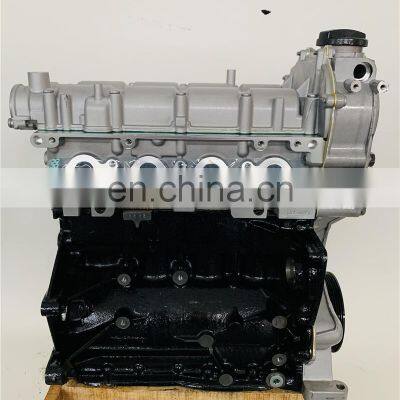Just How a Clp Engine Can Boost Efficiency in Numerous Industries
The introduction of CLP engines notes a considerable change in operational performance across different sectors, driven by their capacity to optimize gas consumption and decrease downtime. Industries such as manufacturing and logistics stand to obtain considerably from their durable layout and constant power output, which guarantee to simplify operations and improve productivity. As organizations increasingly focus on sustainability along with efficiency, the function of CLP engines becomes a lot more vital. What continues to be to be seen is how these innovations will shape the future landscape of industrial operations and their effect on wider financial patterns (clp engine).
Summary of CLP Engines
CLP engines, or Continuous Fluid Propellant engines, stand for a considerable improvement in propulsion innovation, especially for space applications. These engines use a continuous feed system that allows for the continual expulsion of propellant, causing improved efficiency and efficiency contrasted to conventional solid or hybrid propulsion systems. By keeping a continuous flow of fluid propellant, CLP engines can accomplish much more precise drive control, which is vital for navigating spacecraft in various goal circumstances.
The design of CLP engines incorporates sophisticated materials and ingenious fuel monitoring systems. clp engine. This leads to lowered weight and raised dependability, important variables for long-duration area missions. The constant procedure reduces the threat of combustion instability, a typical obstacle in traditional rocket engines.

Benefits in Manufacturing
The manufacturing of Continuous Liquid Propellant (CLP) engines offers numerous remarkable benefits that boost both effectiveness and cost-effectiveness. One of the main benefits is the streamlined production procedure, which lowers the intricacy connected with standard propulsion systems. By using liquid propellant, producers can achieve better precision in engine performance, leading to maximized power output and decreased waste.
Additionally, CLP engines help with a greater level of modularity, permitting simpler integration right into different manufacturing lines. This adaptability can considerably lower preparations and improve overall functional flexibility. The use of CLP modern technology likewise tends to decrease the requirement for comprehensive maintenance because of fewer relocating parts, which converts into reduced downtime and functional costs.

Applications in Logistics
Leveraging Continuous Liquid Propellant (CLP) engines in logistics offers significant advantages in operational efficiency and reliability. These engines offer a robust service for various transportation needs, enabling the smooth activity of items throughout huge ranges. The intrinsic style of CLP engines enables regular power result, which equates into smoother and much more predictable transport timetables.
Among the crucial applications of CLP engines in logistics is in heavy-duty freight transportation, where they can drive both ground and airborne vehicles. Their capability to keep high performance under differing tons conditions guarantees that delivery timelines are fulfilled, therefore boosting client contentment. Additionally, CLP engines can be integrated into automated logistics systems, helping with real-time monitoring and enhancing route planning.
In addition, the resilience of CLP engines lowers upkeep downtime, allowing logistics firms to maximize their operational abilities. This is particularly beneficial in warehousing procedures, where performance in managing and transferring items is important. As logistics remains to advance, the combination of CLP engines stands for a forward-thinking method that not just enhances efficiency yet likewise sustains the industry's expanding demands for dependability and rate.
Effect on Power Effectiveness
Just How do Continuous Liquid Propellant (CLP) engines improve power efficiency in transport? CLP engines make use of a constant circulation of fluid fuel, enhancing burning processes and maintaining a steady drive output. This design lessens power losses connected with standard burning engines, where fuel shipment can differ and bring about inefficiencies.
The continual operation of CLP engines enables a more efficient thermal cycle, leading to greater specific impulse compared to traditional engines. clp engine. This equates to lowered gas intake for the same amount of work done, substantially decreasing functional costs across various transport sectors, including aviation and maritime markets
Additionally, the capacity of CLP engines to keep optimum efficiency under differing lots problems lowers the requirement for constant velocity and slowdown, additionally boosting gas performance. Enhanced power effectiveness not only adds to set you back financial savings however likewise causes reduce greenhouse gas discharges, lining up with worldwide sustainability goals.
Future Trends and Innovations
Emerging advancements in Continuous Fluid Propellant (CLP) engine technology assurance to change the landscape of transport effectiveness check here and sustainability. As markets pivot toward greener choices, CLP engines stand at the center, incorporating ingenious materials and layout techniques that boost efficiency while reducing environmental influence.
Among the most promising fads is the fostering of hybrid systems that combine CLP engines with renewable resource sources. This synergy can maximize fuel consumption and lower discharges, aligning with international sustainability goals. Moreover, advancements in computational liquid dynamics (CFD) are helping with the design of even more aerodynamically efficient engines, bring about minimized drag and improved gas efficiency.
In addition, the advancement of clever monitoring systems is established to from this source enhance operational efficiencies. These systems utilize data analytics and IoT innovation to optimize engine performance in real-time, making certain that the engines operate within their most effective parameters.
As research study proceeds to explore different propellant formulations-- such as biofuels and artificial gas-- the future of CLP engines looks appealing. By using these developments, markets can not just improve their effectiveness yet also contribute significantly to a cleaner, a lot more lasting future in transportation.
Conclusion
In final thought, CLP engines stand for a significant development in effectiveness throughout numerous industries. Their capability to enhance gas intake and reduce operational expenses, integrated with a learn this here now continual feed system, boosts power result and operational reliability. The integration of sophisticated products and fewer moving components reduces maintenance requirements, while positioning with sustainability goals positions CLP engines as a pivotal technology for the future. Continued advancement in this area guarantees more renovations in performance and ecological efficiency.